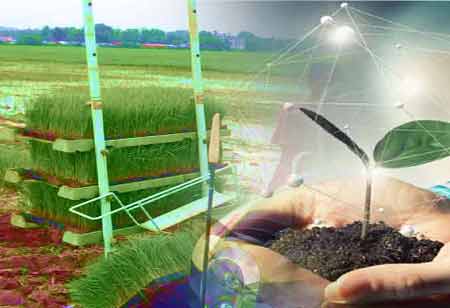Thank you for Subscribing to Agri Business Review Weekly Brief
Ways to Achieve Sustainable Aquaculture
Aquaculture has emerged as a promising avenue.

By
Agri Business Review | Tuesday, October 31, 2023
Stay ahead of the industry with exclusive feature stories on the top companies, expert insights and the latest news delivered straight to your inbox. Subscribe today.
Monitoring and planning systems that promote sustainable aquaculture can be developed using satellite technology, ecological modeling, and open data.
FREMONT, CA: Aquaculture has emerged as a promising avenue. Farmed fish exhibit an impressive feed-to-food conversion efficiency comparable to that of poultry, making them a compelling choice. Aquaculture has its environmental consequences that must be reckoned with. An expansion of aquaculture production without corresponding improvements in efficiency could amplify the industry's ecological footprint. Without a concurrent increase in productivity, the scarcity of land, water, and feed resources may ultimately constrain the industry's growth. A suite of concerns accompanied the fast rise of aquaculture.
The industry's dependency on fishmeal and fish oil derived from wild marine fish raised alarms, as did the rise of water pollution and outbreaks of diseases among shrimp and fish populations. The aquaculture sector has made remarkable strides in addressing these issues. It has achieved greater efficiency in producing more fish per unit of land and water, reduced its reliance on fishmeal and fish oil in feeds, and taken substantial steps towards curbing mangrove destruction. Areas like breeding technology, disease control, nutrition, and environmentally friendly production methods can significantly benefit from scientific advancements.
The distinct advantage of aquaculture over livestock farming can be attributed to its relative importance, and the innovation potential is significant as a result. Collaborations between farmers, research institutions, companies, and governments have historically fueled productivity gains across the globe. While many regulations and certifications focus on individual farms, the aggregate impacts of multiple farms in the same vicinity can be substantial. Rise in production due to breakthroughs in breeding techniques coupled with the adoption of high-quality pellet feed. Even if all farms adhere to regulations, water pollution and disease transmission can occur.
A spatial planning and zoning program can play a significant role in ensuring that aquaculture operations remain within the carrying capacity of their surroundings. Low-interest loans and tax exemptions have enabled small-scale farmers to adopt advanced technology, boosting productivity and alleviating the pressure to clear new land. The government and the private sector can work together to encourage farmers to adopt sustainable practices. Platforms can facilitate improved spatial planning and monitoring by governments, support industry planning for sustainability, and empower civil society to hold industry and government accountable.





